Over the past two months, I’ve shifted from being an iPhone user to being a Google Pixel user, picking up the Pixel 7 range of devices, including the Pixel 6a (technically a member of the Pixel 6 family, but we’ll count it because it was released much later) and the new Pixel Watch.
I originally started with the Google Pixel 6a, as I was a big fan of how small it was. I hate big phones, but have come to appreciate the Google Pixel 7 Pro, which is my new standard phone.
Over this time of using so many Google devices, I’ve become really impressed with Google’s offerings. Each device feels premium, and even the cheap Pixel 6a feels up to the standard you’d expect from a $1,000+ iPhone.
So, with Google’s Pixel 7 devices all offering terrific value, how do you know which device is right for you? Well, here’s what I reckon.
Google Pixel 7 devices: Size
Size has long been the most important thing to me as a smartphone user, having used the iPhone 13 Mini for much of last year and after loving the ASUS Zenfone 9 so much, but unfortunately, a larger size is often matched with performance and specs in smartphones.
Google’s range is no different. The smallest phone, the Pixel 6a, comes with the least interesting specs, but is much smaller than the Pixel 7 and 7 Pro. It’s much better for one-handed use, but it doesn’t boast the same performance.
That being said, I will admit that using a bigger phone hasn’t annoyed me as much as I thought it would. It’d just be nice to have these specs in a smaller device, too.
If size is important to you, the choice is obvious: the Pixel 6a. However, if you’re after better performance on all fronts, the Pixel 7 Pro is the right call. If you’d like to meet size and performance halfway, then the Pixel 7 might be the right choice.
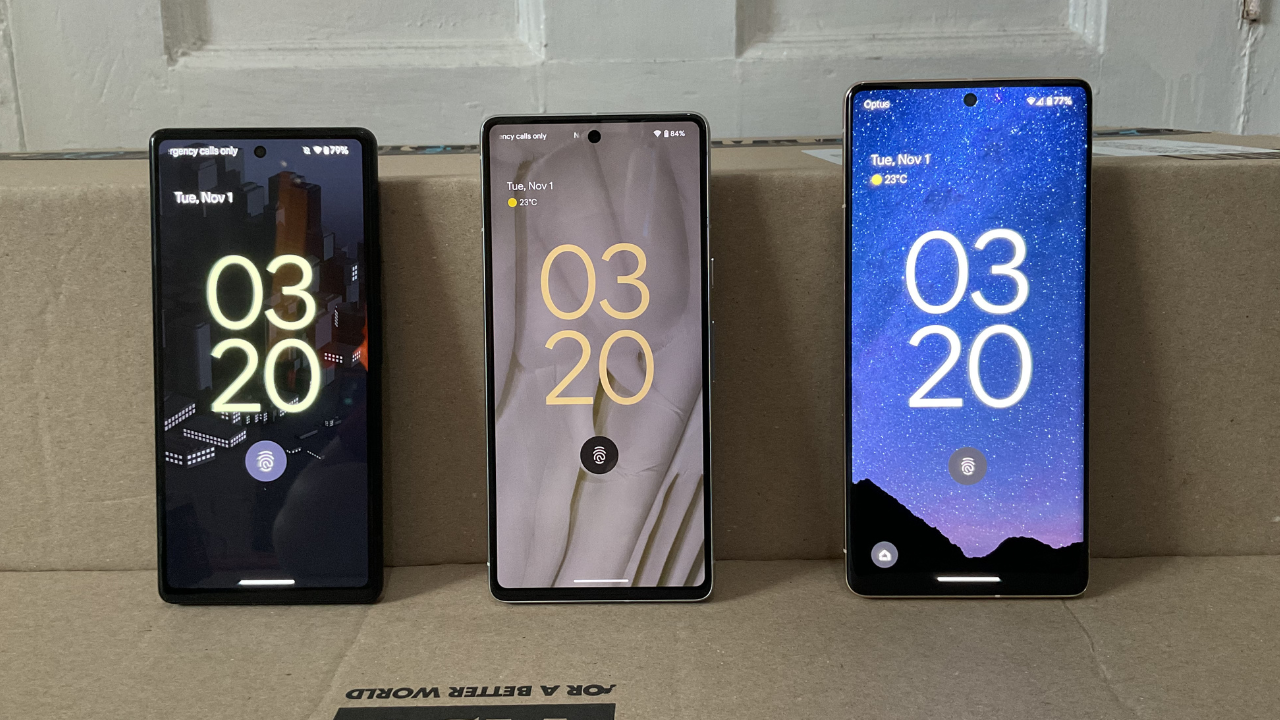
Google Pixel 7 devices: Screen
When I switched between each phone, I started to notice a trend with the screen that translates well as a summary for Google’s range of devices.
These phones are all terrific and can all stand up for themselves in their own ways, but the performance gap between each device isn’t great enough to feel device FOMO. The screen refresh rates, for example, start at 60hz on the Pixel 6a, then 90hz on the 7, followed by 120hz on the 7 Pro. It’s noticeable, sure, but the screens and animations look fine enough as is on the Pixel 6a and smoother on the 7 Pro.
That being said, if you’re after the best device for screen quality, you’d be better off with the Pixel 7 Pro:
- The Pixel 6a includes a less beautiful screen than the rest of the Pixel range, at a resolution of 1080 x 2400 (6.1-inch) on an OLED HDR panel, operating at 60hz.
- The Pixel 7 offers the same resolution (6.3-inch) as the Pixel 6a except on an AMOLED 90hz display (offering much better colour depth and picture quality).
- Finally, the Pixel 7 Pro offers a 1440 x 3120 resolution (6.7-inch) on an LTPO AMOLED panel, operating at 120hz. It’s easily the prettiest screen of the three and is my preferred screen for watching videos on.
Google Pixel 7 devices: cameras
Again, camera quality gets better the more you spend, but this is the area where performance is probably the most noticeable between each device.
The Google Pixel 7 Pro is the winner on all fronts, no doubt. It’s able to produce much better colour clarity than the Pixel 6a and 7, while also producing a more detailed shot, as you can see in the macro testing and the photos of my niece.
Here are some side-by-sides.
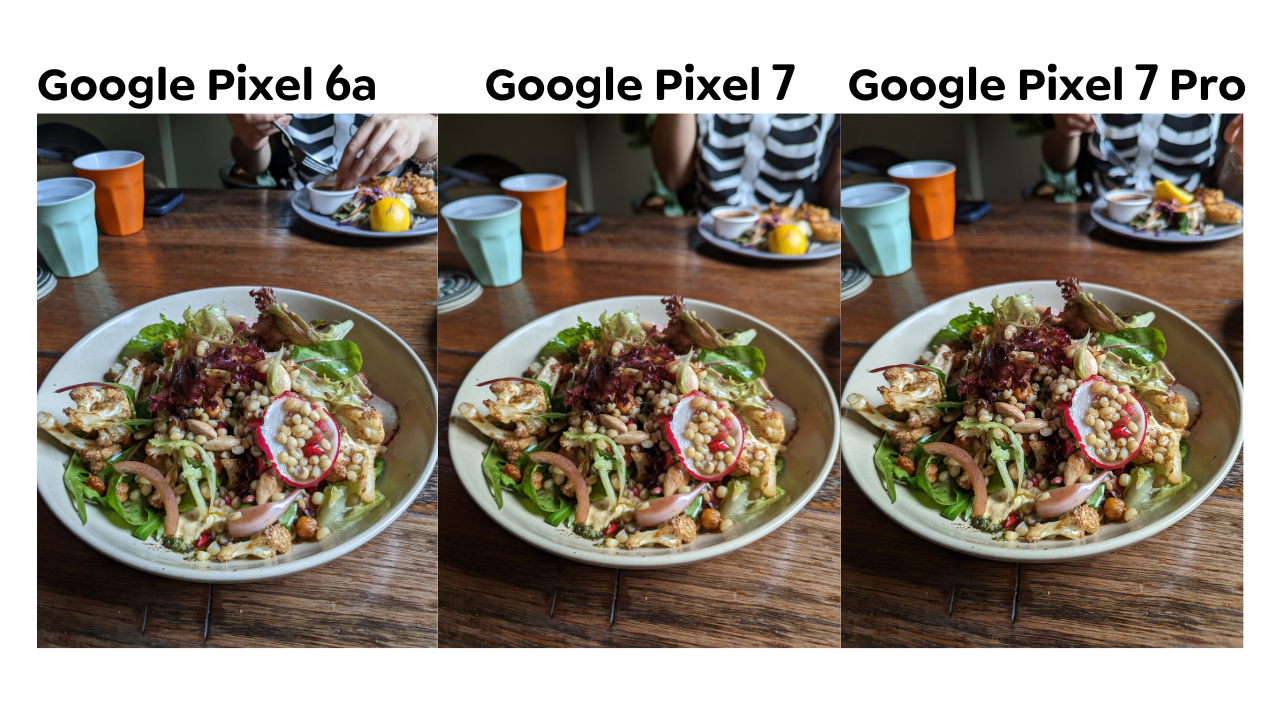
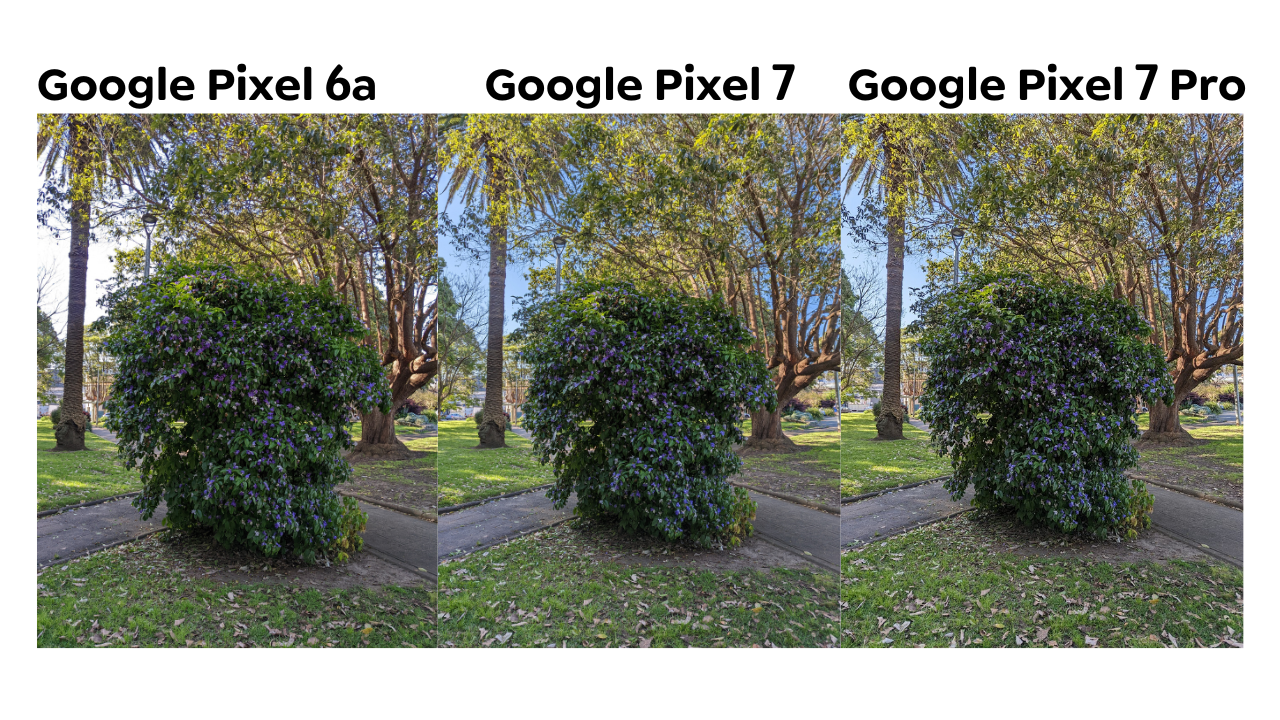
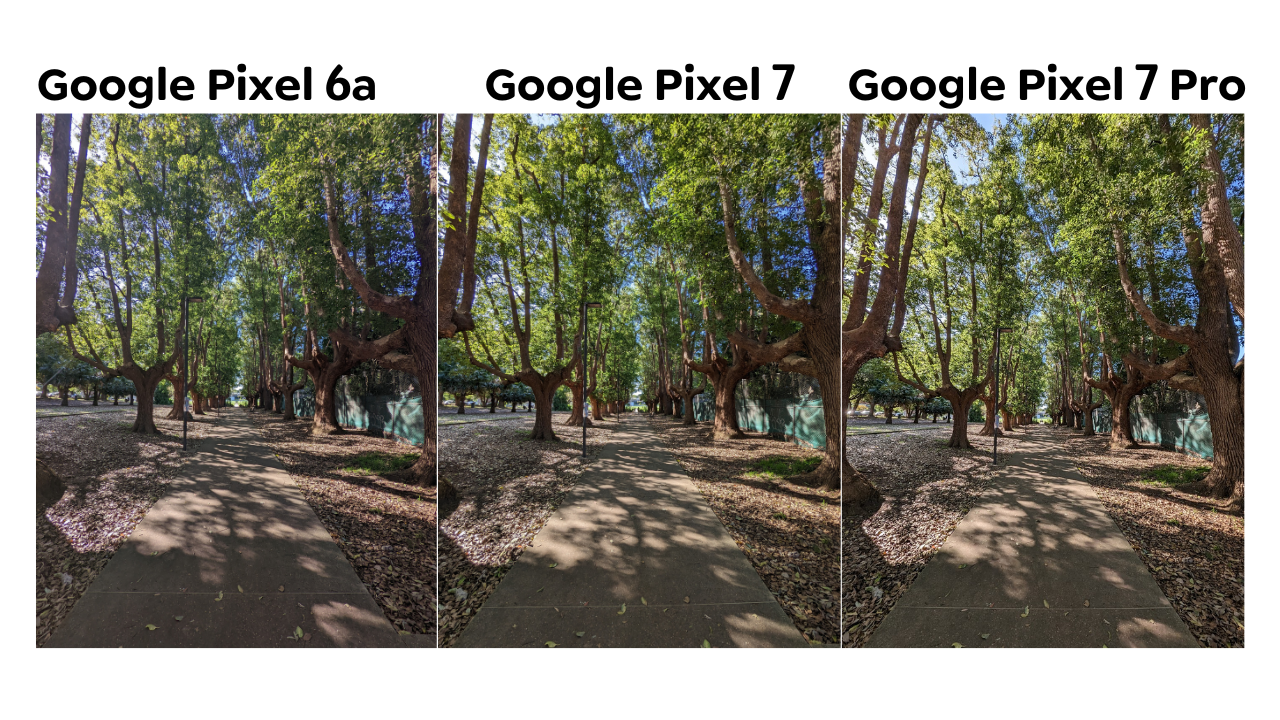
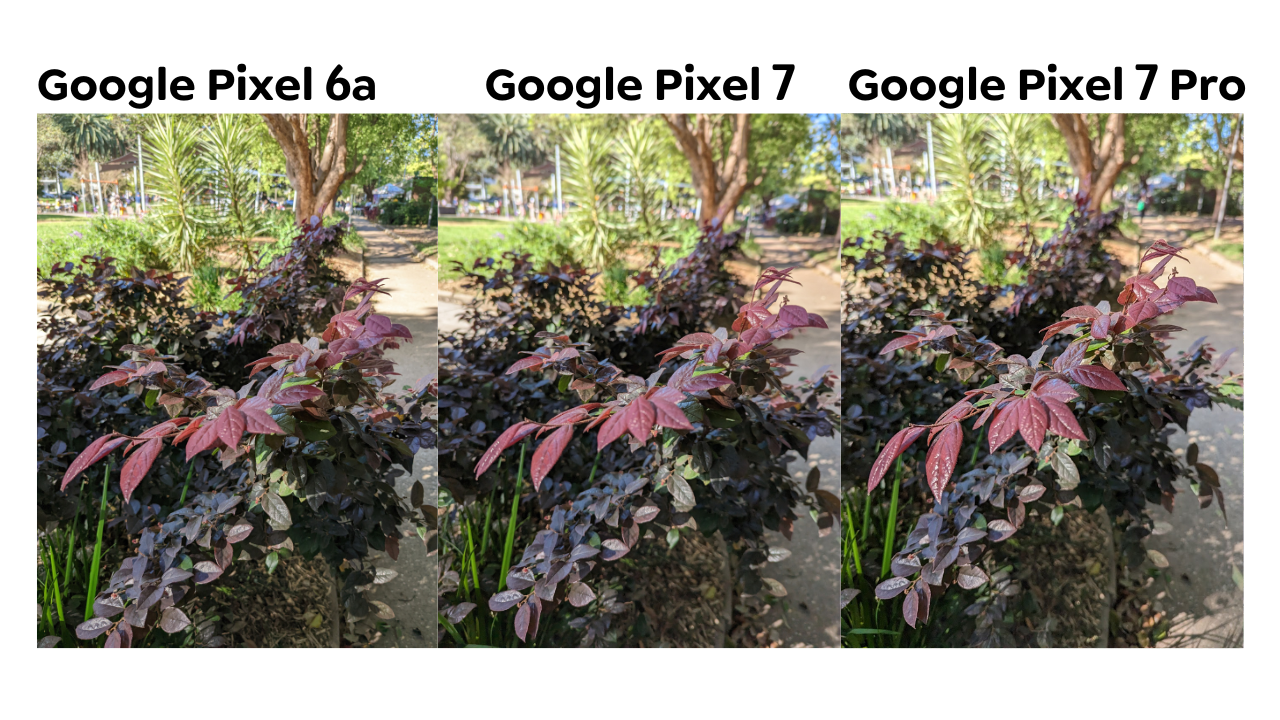
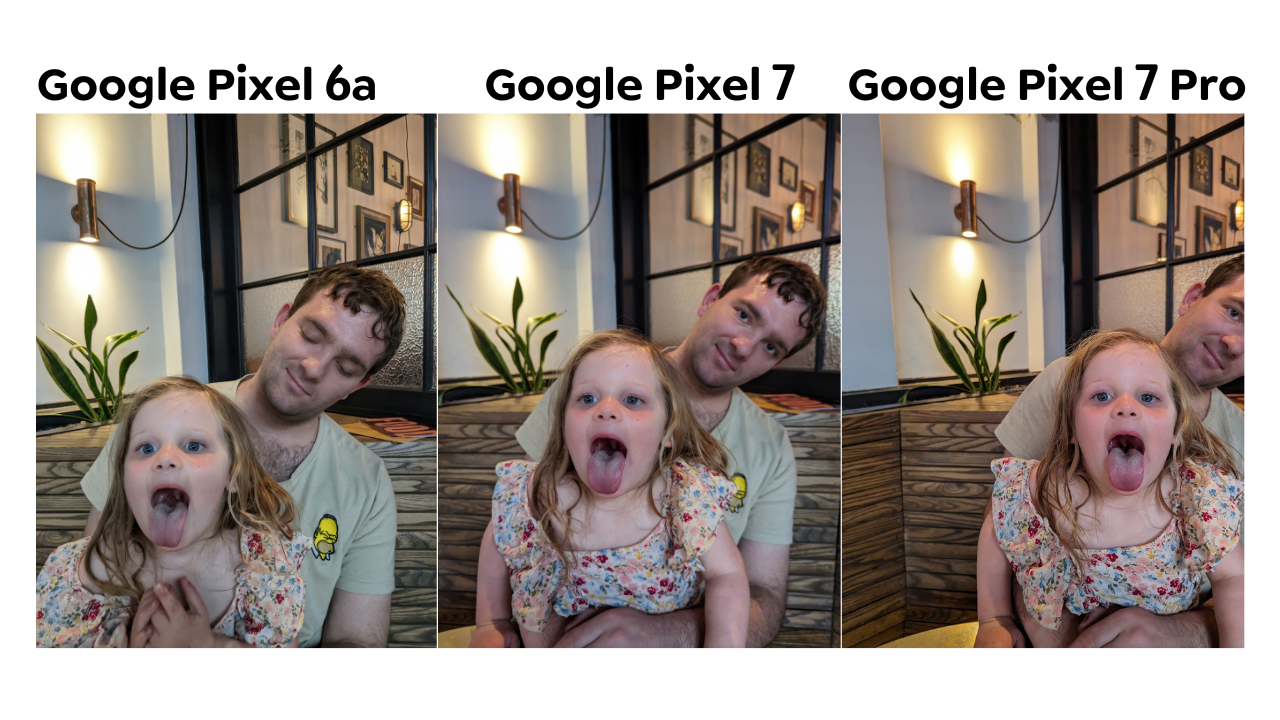
This being said, the photos on offer from the Google Pixel 6a aren’t bad at all, especially for a sub-$1,000 phone. If you spend more on your Google phone, you’ll get a better photo, but if you’re on a budget, you’re certainly not missing out on quality.
Performance
Having used the Pixel 6a for about a month and then switching to the Pixel 7 Pro (while using the Pixel 7 intermittently), performance doesn’t differ greatly between these phones. Sure, the Pixel 7 and 7 Pro feature the new Tensor G2 chip (8GB RAM on the standard phone, 12GB RAM on the Pro), whereas the Pixel 6a features the original Tensor (along with 6GB RAM), but I never felt inhibited by the Pixel 6a’s lower specs. It’s still capable of all the same things as the Pixel 7 and Pixel 7 Pro, minus a few new features and face unlock.
Gaming-wise, each device is a treat. I don’t think the lower specs offered by the Pixel 6a inhibit gameplay much at all, however only having a 60hz display does get a little annoying if you’re used to higher framerates.
In my battery test, having each film run the entirety of Avengers: Endgame at the highest resolution, volume and brightness from 100 per cent, each phone came in quite close to the other. The Pixel 6a dropped down to 80 per cent after the entire movie, as did the Pixel 7, while the Pixel 7 Pro was worked down to 78 per cent.
These results are reflective of a contained example, pitting them against each other on an even playing field, however, I will say that I’ve used the Pixel 7 Pro over two days without needing to charge it.
With the Pixel 7 and the 6a, I found myself charging every night, but the Pixel 7 Pro, with its 5,000mAh battery (4,355mAh on the Pixel 7, 4,410mAh on the Pixel 6a), is able to handle multiple days without needing a charge.
Should I add on the Pixel Watch?
If you’re into fitness apps and would like a device that can answer calls, control media, tap and pay and, honestly, looks pretty cool on your wrist, then I recommend the Pixel Watch as the perfect accompanying smartwatch to the Google Pixel 7 range of devices.
That being said, as it starts at a price of $549, it’s difficult to get tremendous value out of this device. I do think it’s beautiful, absolutely, and it does have its uses (and it offers a fairly seamless interface), but it’s a steep price to pay.
I should note that this was the first smartwatch I’ve ever used, let alone reviewed, but I was reasonably impressed with the functionality it offered.
Tracking my steps, checking my ECG and controlling Spotify were all things that worked a treat on the Pixel Watch. You also get six months of Fitbit Premium with your purchase, which is a nice plus.
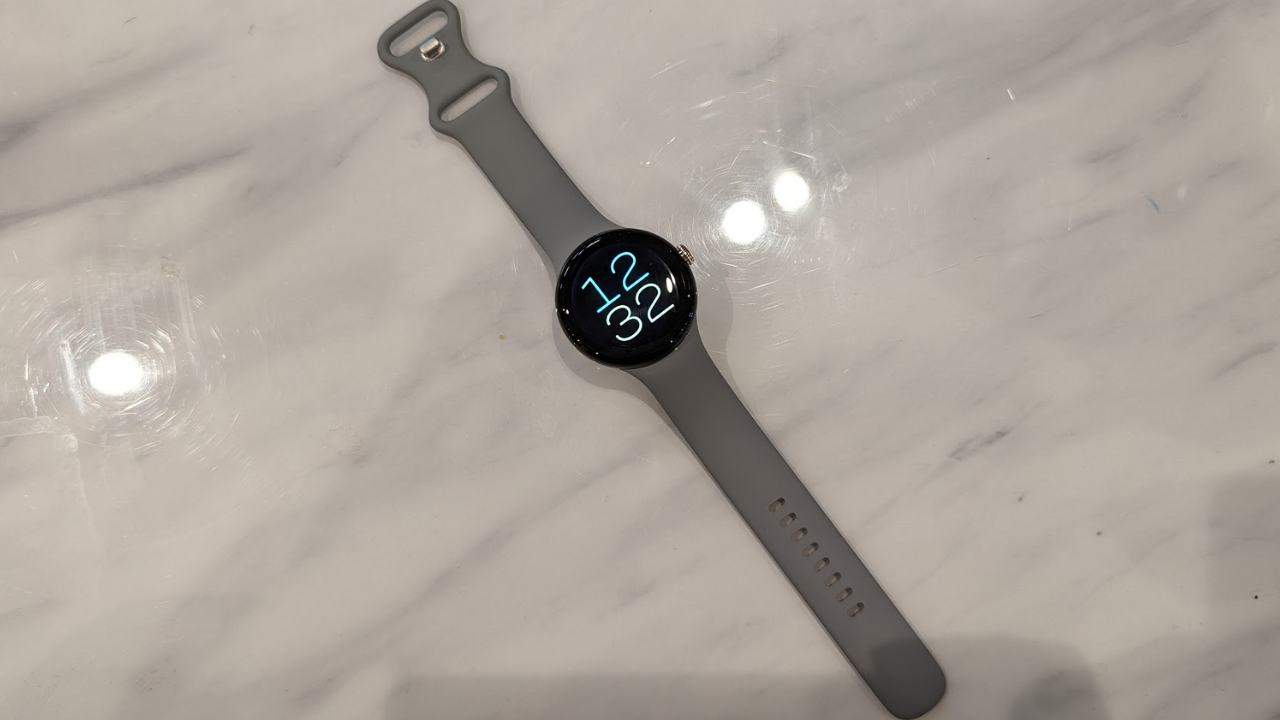
Google Pixel 7 devices: Budget
This is, perhaps, the simplest point. The obvious choice here is the Pixel 6a, starting at $749. It’s a terrific phone for the price and is one of the best phones under $1,000. If you’d like to meet midway between price and performance, then the Pixel 7 is perfect for you, starting at $999. Finally, if you want the best performance on offer in all categories, the Pixel 7 Pro is for you, starting at $1,299.
Pixel perfect
That’s about it on Google’s Pixel range of devices. As it currently stands, I’m using the Pixel 7 Pro and the Google Pixel Watch as they offer much better camera performance and a higher screen refresh rate, but if they ever offered this level of performance in a phone as small as the Pixel 6a, I’d be there with bells on.
Budget-wise, it pays to consider that each of these devices is priced well under their alternatives from Apple and Samsung. Pricing has become a niche Google has excelled in since the Pixel 3a and continues to do well with now that the phone has entered its seventh generation.
Always shop around and look for alternatives, but the price-to-performance package offered by the Google Pixel 7 range of devices is hard to beat.
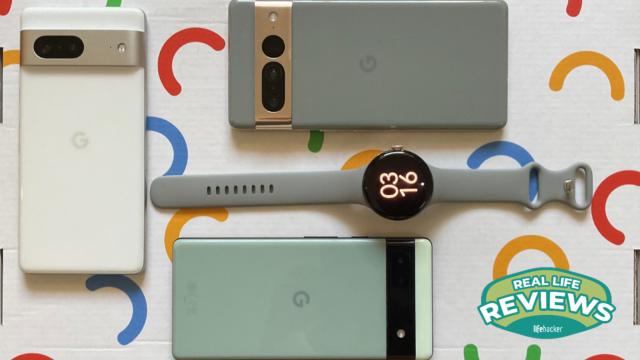
Leave a Reply
You must be logged in to post a comment.